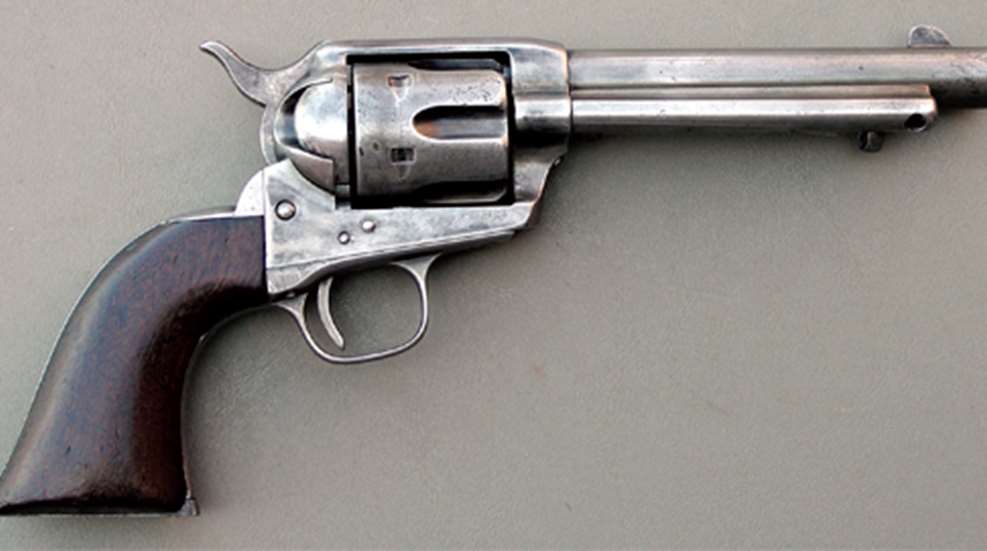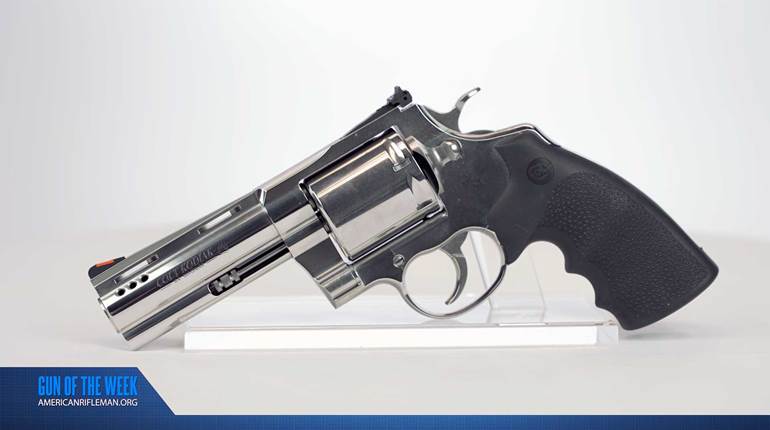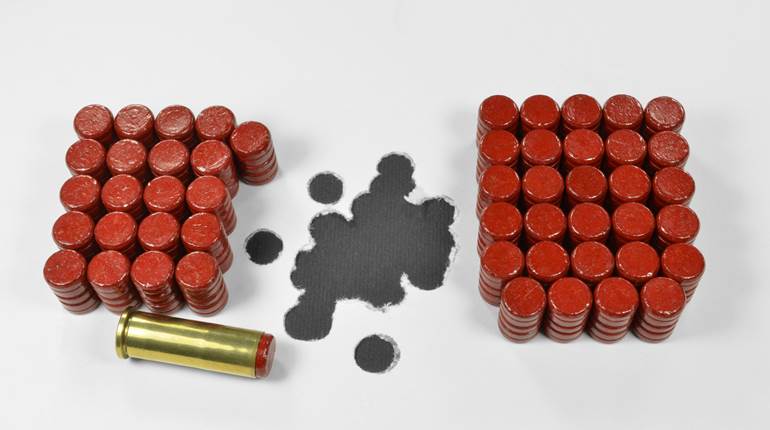
Colt SAA Artillery Model
Gun: Colt SAA Artillery Model Revolver
Condition: No original finish (NRA Antique Good)
Approximate Value: $2,000 to $3,000
The Colt Single Action Army, or “SAA” revolver, is doubtless the classic sixgun most associated in our folklore with the American West. Introduced in 1873, the basic design remained-with a few interruptions-in production and is manufactured today by Colt and other firms.
U.S. military-purchased SAAs are among the most eagerly sought-after historic sidearms of the era, having been used from the Indian Wars into the early 20th century by the U.S. Army. They were originally issued with 7½" barrels in .45 Colt.
Between 1895 and 1903, the government had nearly 17,000 of its SAAs reconditioned and rebuilt by the Springfield Armory and the Colt factory. Most of these guns had the barrels shortened to 5½". Since most guns were reassembled without concern for part numbers, this is one of the few collectible gun variations that is considered “correct” with mixed serial numbers-meaning that the various parts of the gun will usually not match each other.
These refurbished revolvers were issued to troops in the Spanish American War and Philippine Insurrection, and have been nicknamed “Artillery Models” by collectors, since a few of them were issued to Artillery units. The original long-barrel variations are distinguished by the “Cavalry Model” nickname and should generally have matching serial numbers. Both types will have “U.S.” stamped on the frame, along with inspector initials on various parts.
This gun appears to have no original finish remaining. It has the mixed serial numbers of the typical Artillery Model. The frame is number 139403, showing Rinaldo A. Carr’s “R.A.C.” inspector mark-circa 1891 production-along with inspector Orville Ainsworth’s “A” marking on the triggerguard (number 11449) and backstrap (number 9552). Both were from 1874-production revolvers.
The Blue Book of Gun Values lists the value of a 10 percent-finish Artillery Model at $3,000, and a good no-finish gun may easily approach that value. Unusual sub-variations can add further to the price.
Unfortunately, Colt military Single Action Army revolvers are sometimes faked or extensively modified, and an expert evaluation is generally recommended for anyone considering a purchase.
-Jim Supica
(Originally published June 2006)





































